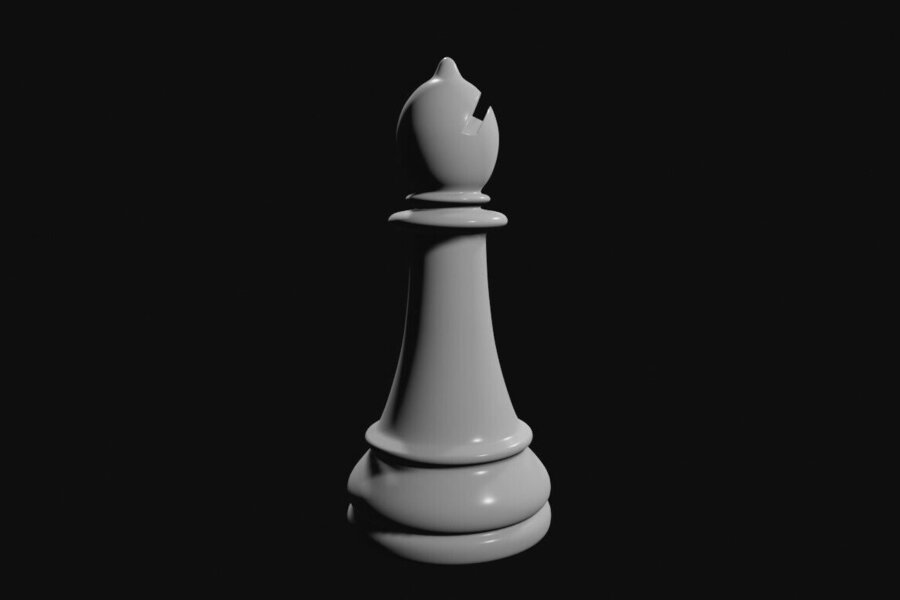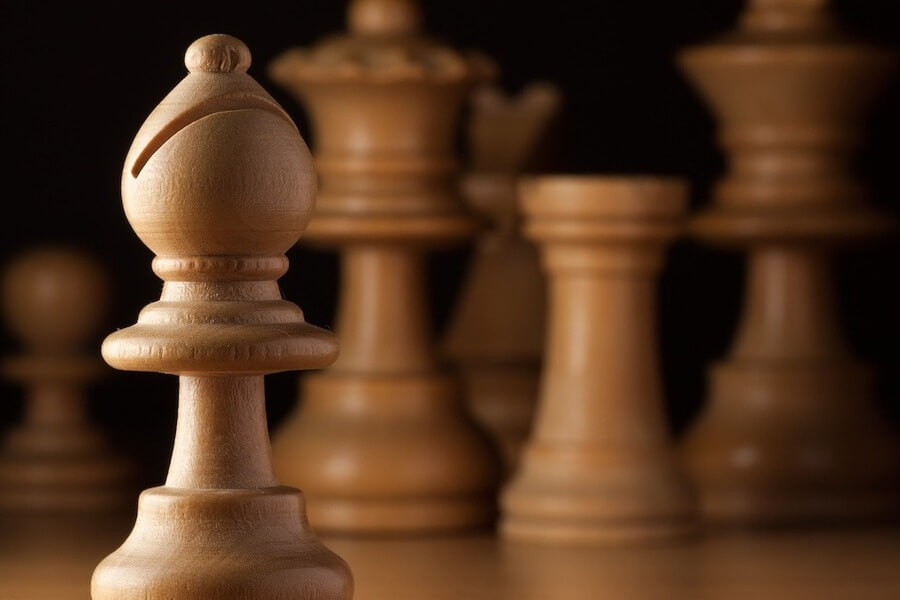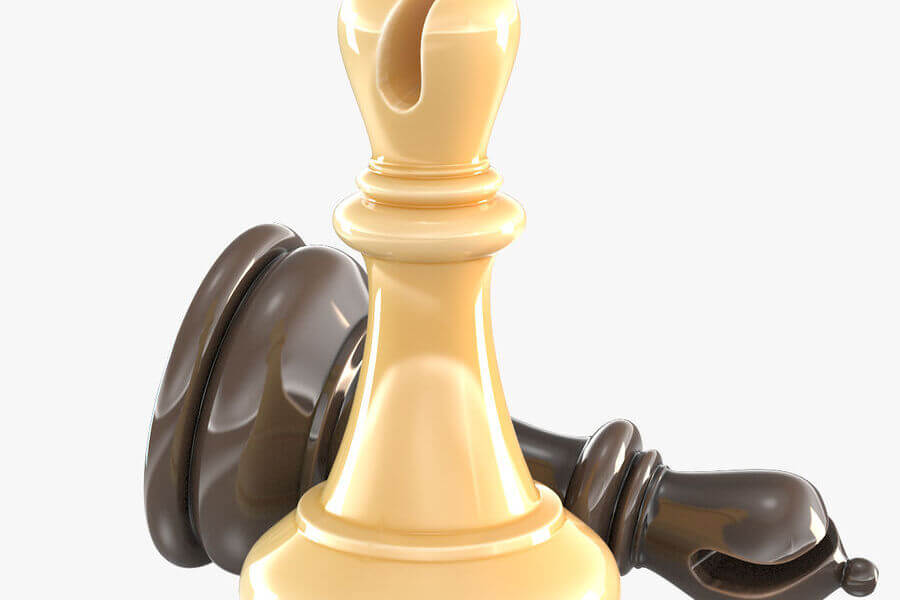No products in the cart.
Chess Rules & Instructions
Chess Bishop: How To Move And Master Bishops
The bishop chess piece may cause a lot of trouble on a high-end chessboard. It might put serious pressure on the position of your opponent. The bishop in chess may serve as both a lethal attacker and a vital defender. Here is all the information you should know about this significant chess piece.
Table of Contents
Bishop In Chess
A bishop is a chess piece with a slit cut into it and a rounded top. On a luxury chessboard, there are a total of four bishops: two white and two black pieces. The two chess bishops for each player begin the game to the right of the king and to the left of the queen.
In terms of relative worth, a chess bishop is equivalent to a knight with a value of three. It is more valuable than a pawn but less precious than a rook or a queen. Therefore, the bishop in chess is considered a minor piece.
How Bishop Moves In Chess
The bishop chess piece may move diagonally in any direction. A bishop can move an unlimited number of squares on the chessboard as long as no other piece is in its way, according to the rules of the game. It cannot jump over other pieces like the knight. By landing on the square held by an enemy piece, bishops will take over that chess piece and remove it from the chessboard.
Bishops who start on light squares can only move on squares of that color, whereas bishops who begin on black squares can only stay on black squares. Both of them are frequently referred to as light square and dark square bishops.
Types Of Bishop In Chess
Active Bishop (Good Bishop)
Active bishops are those that can move about freely outside of their pawn chains, whereas passive bishops are those who are pinned down by their pawn chains. A bishop who is active can quickly go from one area to another, thus they should always be treated with respect. As a result of its versatility and range, an active bishop is typically a more potent piece.
If you have a passive bishop trapped behind a pawn chain, you should figure out a means to free that Bishop. In that way, the tremendous power of the bishop is released, and it may become a total beast in the chess game.
Useful Bishop (Super Good Bishop)
If a bishop is performing a crucial defensive or dynamic job, it is said to be “useful.” Although such a defensive bishop might be unappealing, your position and gameplay would suffer greatly if it was not present.
Bishops who are active are good, but occasionally they are just asserting control over irrelevant territory. If so, you will need to come up with or make them do something. A perfect bishop is considered to be both practical and engaged. Not only it is capable of controlling plenty of squares, but it also serves specific purposes.
Tall Pawn (Bad Bishop)
The bishop should not face this situation, because if a bishop is imprisoned behind its own pawns and not performing a constructive task, it is referred to as a Tall Pawn. This type of bishop assumes the role of an oversized pawn that, regrettably, cannot advance into stronger pieces if it reaches the board’s edge, making it completely inactive.
When you have a Tall Pawn, you should:
Unblock your bishop by getting your pawns out of its way.
Remove your bishop from the pawn chain.
Replace the awful bishop with a knight or bishop from the opponent
Basic Bishop Strategies In Chess
The Fianchettoed Bishop
The Italian word for a little flank is fianchetto. Little (“-etto”) and “fianco” (“fianco” implies flank or side).
Chess players can quickly develop the bishop by using a fianchetto, a unique move set. The pawn on the b- or g-file is moved one or two squares forward in the initial fianchetto move. The bishop can be developed to the second rank after the pawn moves. This not only immediately controls the middle of the board but also offers a strong defense against king casting. A fianchetto may quickly put your opponent’s advancement under strain if you are playing as the white pieces. A fianchetto may assist you in creating a counterattack and influencing the middle of the board if you are using the black pieces.
The Bishop Pair
One of the Bishop’s key limitations, its inability to control an entire color complex, is remedied by having two bishops because both the white and dark diagonals can now be thoroughly patrolled. If the two bishops are on consecutive diagonals, they cooperate well because they may effectively dominate a significant number of squares on the chessboard.
Of course, the bishops may not be particularly effective if the situation is tight and all diagonals are blocked. However, in general, the bishop pair is a wonderful thing to have and may cause some difficulties to the opponent.
How To Play Bishop Effectively
Always Keep Bishops’ Paths Open
A bishop’s potential is maximized by positioning it on an open, lengthy diagonal, or in a situation where neither friendly pawns nor an opponent’s pieces are blocking the bishop’s potential movement. A bishop on an open diagonal may make a large impact even if it is in the corner or on the side of the board, unlike a knight, which is most powerful in the centre of the board. Bishops are frequently most useful in the middlegame after the other pieces have moved and the pawn blockade has been broken since they start the game blocked by pawns.
Maximize Power Of Bishops In Endgames
When there are just pawns left in the game as the other pieces, bishops can be highly useful in the endgame. Due to the bishop’s great range, it can both defend your pawns and threaten those of your opponent, which makes it simpler to promote your remaining pawns and finally achieve checkmate. In some cases, having an additional bishop in the endgame is insufficient to checkmate the king of your opponent. The opponent’s king may be able to function as a barrier and block promotion, creating a stalemate, if your lone surviving piece is a rook pawn, that is, a pawn on the an or h-file, and the square on which the pawn would win promotion is a different color square than the ones your bishop occupies. Similar to this, draw outcomes are common in endgames when both the white bishop and the black bishop are still present but are located in different colored squares.










